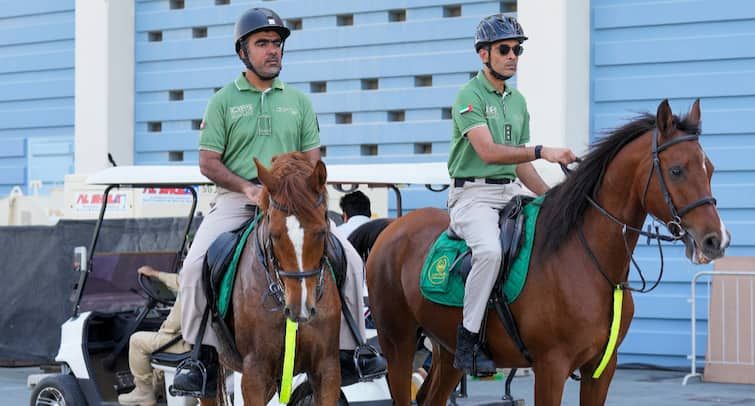Last Updated:
Sharad Navratri 2025 Celebrations Across India: Sharad Navratri celebrates the nine forms of Goddess Durga over nine days, ending with Dussehra.

Sharad Navratri 2025 celebrations in India: In Gujarat, the nine nights of Navratri are celebrated with Garba and Dandiya dances. (Image: Shutterstock)
Sharad Navratri 2025 Celebrations In India: Sharad Navratri, also known as Maha Navratri, is the most celebrated and significant of all Navratris in India. It falls during the lunar month of Ashwin in the Sharad Ritu, which is why it gets its name.
All nine days of this festival are dedicated to the nine forms of Goddess Shakti, with each day honouring a different aspect of Maa Durga. The celebrations culminate on the tenth day with Dussehra, also called Vijaya Dashami, marking the victory of good over evil.
Recommended Stories
ALSO READ: Navratri Wishes 2025: Ghatasthapana Muhurat, Rituals, Facts And Celebrations
This year, Sharad Navratri will be celebrated from September 22 to October 2, falling between September and October as per the Drik Panchang. Across India, people celebrate the festival in diverse ways, blending rituals, local customs, and regional flavours.
While some states create elaborate idols of Goddess Durga in large pandals, in other places, families worship smaller silver idols in home temples.
Each day of Navratri is dedicated to a form of Goddess Durga and has its own colours and offerings
In states like Maharashtra and Gujarat, women follow the tradition of wearing nine different colours during the nine days of Navratri. Each day’s colour is linked to the weekday, which in turn is ruled by one of the Navgrahas (planets).
Devotees also offer specific Prasad to Navdurga each day, seeking her blessings and guidance. Every Avatar of Navdurga represents a unique characteristic of the Goddess, emphasising her different powers and qualities.
ALSO READ: Navratri 2025: 8 Must-Visit Maa Durga Temples Across India
Sharad Navratri is celebrated more widely than Chaitra Navratri, which occurs earlier in the year. The festival is not just about rituals but also about honouring Goddess Durga for protecting humanity.
According to legend, Mahishasura, a demon, received a boon that made him safe from attacks from men and Gods alike. He caused havoc across the three worlds, leaving humanity in fear.
To save the world, Lord Vishnu, Lord Brahma, and Lord Shiva combined their powers to create Goddess Durga. She fought Mahishasura for nine nights and finally defeated him on Vijayadashmi.
People in different parts of India celebrate Navratri in their own unique ways
In West Bengal, Sharad Navratri is celebrated as Durga Puja or ‘Pujo.’ The festivities are grand, with beautifully decorated pandals, huge idols of Goddess Durga, bells, chants, and lights that capture the attention of locals and tourists alike. Popular rituals during Durga Puja include Pushpanjali, Sindoor Khela, and the immersion of the idols at the end of the festival.
In Gujarat, the nine nights of Navratri are celebrated with Garba and Dandiya dances. Streets fill with people dressed in bright ethnic clothes, holding Dandiya sticks, and dancing energetically to welcome Goddess Durga. The celebrations have now also spread to cities like Delhi, creating a lively festive atmosphere.
In Mysuru, the grand Mysuru Dussehra is celebrated during Navratri. The royal family worships Goddess Chamundeshwari, the form of Durga who defeated Mahishasura, and also pays homage to the royal sword, a symbol of honour and protection. Traditional music, cultural performances, and tableaux (Jhanki) make the event one of the most spectacular in the country.
Ramleela performances also form an important part of Navratri celebrations
In many parts of India, Navratri is accompanied by Ramleela, the enactment of Lord Ram’s victory over the demon king Ravan. Actors perform live on stage, portraying characters like Lord Ram, Lakshman, Sita, Hanuman, and Ravan over nine days. On Dussehra, huge effigies of Ravan are burnt, symbolising the triumph of good over evil.
In states like Delhi, Punjab, Haryana, and Rajasthan, Kanjak Puja is observed on Ashtami or Navami. Young girls, representing Goddess Durga’s energy and purity, are offered food, clothes, gifts, and money. Devotees seek their blessings, marking the final day of Navratri celebrations. The simple Prasad usually includes puri, chana, and halwa.
Despite regional differences, Navratri is about devotion and respect for Goddess Durga. Whether through grand pandals or Kanya Puja at home, every ritual celebrates her power and the victory of good over evil.
About the Author

Nibandh Vinod is a seasoned journalist with nearly three decades of experience, known for his in-depth coverage of events and festivals, as well as his expertise in SEO-driven content at News18.com. A tech-savv…Read More
Nibandh Vinod is a seasoned journalist with nearly three decades of experience, known for his in-depth coverage of events and festivals, as well as his expertise in SEO-driven content at News18.com. A tech-savv… Read More
September 16, 2025, 09:10 IST
Loading comments…
Go to Source
Author: News18



